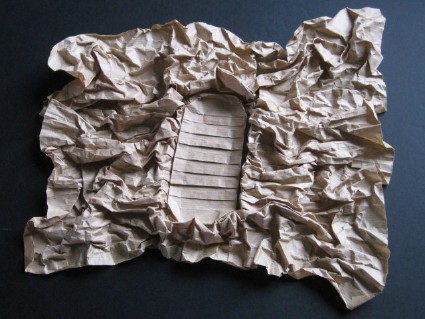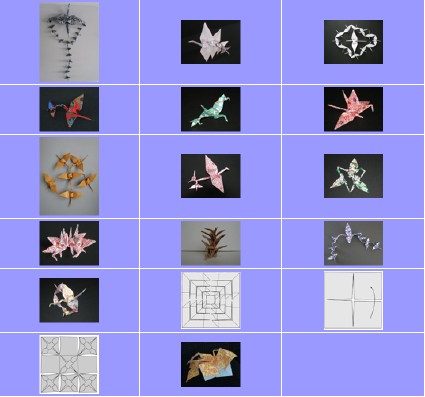
 | Welcome on MOOC-invitation |
|
| New! | An invitation to practice origami | map | Practical work The « tsunagiori » style |
| Back MOOC1 | Journey 3 | Sequence 3 | <--- page 1 | page 2 | page 3---> |
 |
Some techniques of the « tsunagiori » style |
| Gido Rokoan explored the possibilities offered by the technique of the slits. In addition to playing on layouts like those seen in the previous sheet, he used three other techniques: - recoveries of sheet parts to create formats other than square. We must fold together squares, which gives the cranes immediate thickness! For example, to create the beautiful folding « Tsuri Fune - The fishing boat », the fishing net is figured using a set of 17 small cranes obtained from 24 squares, 14 of them being superimposed. Everything is connected to the wings of a crane 5 times larger. Very delicate! To better understand the principle, look at the fold patterns of « Kanae - The Camping Stove » and « Asagao - Bindweed ». - connections to places other than beaks, tails or wings, as in « Hina Asobi - We play with dolls ». - passages through the paper allow him to create amazing models, whose difficulty of folding is inversely proportional to the number of cranes. Examine the fold pattern of « Karyobin - Phoenix »! The set of models is in the books Origami Rokoan Style and Origami Rokoan Style #2 written by Masako and Michie Sakai. Some folders have used this style « tsunagiori » to create models of great modernity. |
17 photo(s)